The phrase, “Syria is the front line of defense of the Islamic ummah,” that former Iranian President Ahmadinejad used to repeat, portrays "a strategic depth for Iran," according to Ali Shamkhani, secretary of Iran's Supreme National Security Council (SNSC). The commander of the IRGC's Ammar strategic headquarters for soft wars, “Hujjat al-Islam” Mehdi Taeb, attached it to Iranian geography, saying, "If we lose Syria, we will not be able to hold on to Tehran. The main thing is to hold on to Syria. It is [Iran’s] 35th province, which is of strategic importance. If we have to choose between Syria or Khuzestan, it is better for us to choose Syria."
The above statements explain Iran's involvement in supporting the government of Bashar al-Assad in the face of the popular revolution that sought to topple it. However, with the Iranian strategy based on the presence of Assad in power, Tehran sought to exploit the Syrian event to consolidate its current and future gains to implement the "Twentieth Charter", decided upon in 2005 and aimed at transforming Iran into a supra-regional power.
However, what’s remarkable about the relationship between the two countries recently is Tehran’s use of an economic hammer to solidify its strategic stakes in Syria. According to the Wall Street Journal, Iran intends to limit the supply of low-priced oil to Syria, or through the line of credit held between the two countries, as Iranian officials recently informed their Syrian counterparts to double the price up to the market rate, i.e. more than $70 dollars a barrel.
The newspaper quoted Hamid Hosseini, a spokesman at the Oil, Gas and Petrochemical Products Exporters’ Union in Tehran, saying that Iran itself was now "under pressure and there is no reason to sell oil to Syria at low prices."
The line of credit is intended to set a ceiling for a long-term or short-term financial advance, according to the BBC website. For example, a billion-dollar line of credit from Iran to Syria means that Damascus can buy goods worth a maximum of one billion dollars from Iran, or borrow it in cash according to the terms of the contract, and in return it must pay the profits according to the contract or pay the full amount on the specified date.
Iran itself is now "under pressure and there is no reason to sell oil to Syria at low prices"
According to the same website, it is understood from the recent statements of Iranian officials that they rely on the Syrian market to sell Iranian goods, despite the fact that they have stated on more than one occasion that Iranian goods have no market in Syria.
This opened the doors to predictions by analysts and observers of Syrian affairs, as well as websites and newspapers, to talk about requests by Tehran that fall under the field of strategic military positioning in Syria, in addition to "sovereign financial" concessions in the oil, gas, phosphate fields, as well as projects and communications, during the visit that Iranian President Ebrahim Raisi intended to make to Damascus, which was scheduled for December 27, at the height of the fuel crisis that forced the Syrian regime to reduce official working days.
Syria in the Iranian balance
Iran's strategy in Syria is to secure a solid Iranian influence that extends to the Mediterranean, cutting off the Sunni, Turkish-Saudi axis, and turning Iran into a regional power controlling the region, according to the Rasanah International Institute for Iranian Studies in March 2018.
The change in this strategy, after the outbreak of the Syrian revolution, was the transition from sectarian proselytizing to relying on military and security force, by building a network of military bases, settling foreign fighters, and emerging Shiite enclaves, with local Shiite militias, which facilitate displacement operations to bring about demographic, social, sectarian change, which contributes to ensuring a long-term Iranian presence in Syria.
According to Rasanah, the new change is based on actual and direct control over decision-making positions in sovereign state institutions, the army, and security, and through them, to the rest of the state institutions, and to the political and financial indebtedness to Iran, as it is the savior of the Assad regime.
According to Iyad Hammoud, director of the Nawras Center for Studies, Iran's defense ideology is based on building sectarian barriers outside its borders to defend the center (Tehran), and accordingly, Iran is working to create sectarian military outposts in countries that it considers within its vital sphere, such as Iraq, Syria and Lebanon, along with Bahrain and Yemen as well.
While speaking to Raseef22, Hammoud adds, "Syria is the link connecting the Iranian agenda with its most important allies in the region (Hezbollah) and in order to have access to Mediterranean waters, and from there to the European market for trade, while strategically expanding its military positions adjacent to Israel, in order to benefit from the accumulation of its negotiating cards with the West, and also raise the price of any new attack by Tel Aviv and make it think twice before it launches one on Iran, in light of the shadow war raging between the two sides, which explains Iran's insistence on strategic positioning, especially in southern Syria and the vicinity of Damascus with the road nodes (intersections) leading from Iraq to Lebanon, and in return, Israel’s insistence and fumbling to strike this positioning and prevent its stability.”
In order to preserve its interests in Syria, the Tehran government has become aware of the need to hold on to all sides of the Syrian file and diversify the scenarios for dealing with the multiple outcomes, according to a study by Al Jazeera Centre for Studies, so that Iran can politically push towards continuous influence on the decisions of the Syrian regime and its rehabilitation regionally and internationally, which keeps Tehran in control of the region's files, while working to empty any imagined scenario to remove or isolate the head of the Syrian regime from the actual impact on its position in Syria, by diversifying the Iranian interference in state institutions, especially the security and military institutions.
“If we lose Syria, we will not be able to hold on to Tehran. The main thing is to hold on to Syria. It is [Iran’s] 35th province”.. This is how Iran sees Syria, so will Assad really be able to stay away from it?
It also seeks to employ the regime's political roles by making the Syrian regime's diplomatic tools dependent on Iran's regional and international directives and goals, or by linking official media and executive tools to Iran's choices and orientations.
Economics, counterpart to politics and militarism
In his latest visit to Damascus on Jan. 14, Iranian Foreign Minister Hossein Amir-Abdollahian said that "the conclusion and signing of the long-term comprehensive cooperation document is a road map that clarifies the prospects for long-term cooperation between the two countries in the economic fields," Iran's Fars news agency reported.
For his part, Syrian Foreign Minister Faisal Mekdad saw that economic relations between the two countries are far from the level of political relations, and it is necessary to provide coordination and linkage between the private and government companies of the two countries.
In August 2018, Iranian Defense Minister Amir Hatami and his Syrian counterpart, Ali Ayoub, signed a military treaty, which included Iran providing all forms of support to rebuild the Syrian armed forces and military defense industries, along with a commitment to strengthening the Syrian defense infrastructure, which allows Iran to continue its presence and participation in Syria.
At the same time, Iranian militias are present at the Assad regime's military bases or in well-known formations of their own spread throughout Syria, in addition to Tehran strengthening its alliances with prominent military leaders, such as the commander of the Fourth Division (Major General Maher al-Assad), the commander of the Republican Guards (Major General Talal Makhlouf), and the head of the Air Force Intelligence (Major General Jamil Hassan), according to the Al Jazeera center.
According to Mustafa al-Nuaimi, a researcher and participant in the Forum for Analysis of Iranian Politics, there is a clear deficiency in economic relations compared to the political relations between Tehran and Damascus. Despite the Assad regime's dependence on the decisions of mullahs in Tehran, economic relations between them have remained below the level of political and security relations, given the dominance of the Russian side over strategic sectors, whether in the field of energy and phosphate extraction or ports, and the major contracts that are anticipated in reconstruction projects.
Speaking to Raseef22, he adds, "Although Moscow and Tehran have joined forces to support the Assad regime and prevent its fall, they are divided in many matters in Syria, including the economic and strategic returns of their military intervention there. Accordingly, Moscow has worked to remove Tehran from important economic sectors and strategic locations, and Russia is also working to limit Iranian permeation in Syria within certain limits."
In 2019, Tehran announced the start of the implementation of the railway link project, Shalamcheh-Basra-Latakia, on Syrian territory
In 2019, Tehran announced the start of the implementation of the railway link project, Shalmancheh-Basra-Latakia, on Syrian territory, which was considered a strategic change for Iran, linking it to the shores of the Mediterranean, which strengthens its position in the field of transit and rail links, along with other goals for the Quds Force.
In order to expand its influence in Syria, Tehran signed multiple agreements with the Assad government in 2019 in various fields, the most important of which is the inauguration of "a port in the north of Tartus and another one in part of the port of Latakia," which cannot be confirmed with certainty, despite numerous statements in this regard, according to the Institute for National Security Studies - Tel Aviv University.
According to Hammoud, Tehran is taking advantage of the economic and living crises of the Assad government in order to impose its political and strategic conditions, in a way that strengthens its presence and position in Syria in the future, and blocks the way to any political solution that would be at the expense of its strategic interests in the region. This is what the Assad regime is aware of, and is trying to evade as much as possible for various reasons, including reaching a balance between the Russian and Iranian presence in Syria, and to keep the door open to blackmailing Arab countries, especially the Gulf ones, which hope to return Syria to the Arab fold, away from Iranian hegemony.
"The last reason has been proven by the statements and facts that followed the earthquake that struck Turkey and Syria, including Assad's visit to the Sultanate of Oman and the Saudi Foreign Minister's speech at the Munich Security Conference that ‘the status quo is not workable’ and that the world will need to deal with Damascus ‘at some point’ on issues such as refugees and humanitarian aid," he says.
According to what was reported by some media websites, Jordanian Foreign Minister Ayman Safadi brought the Arab conditions for normalizing relations with Damascus, to Assad during his recent visit after the earthquake. The conditions include changing the nature of the existing relationship between Syria and Iran, and limiting the latter's influence in Syria, along with the need to keep Iran-backed militias away from the southern border with Jordan. Assad met him by saying: "The Arab absence" from Damascus prompted Tehran to fill the void, according to Hammoud.
According to Fanack, a website specialized in Middle East and North African politics, an Islamic pipeline agreement was signed in 2013 between Iran, Iraq and Syria “to reach the Mediterranean at a cost of $10 billion. According to the agreement, about 110 million cubic meters of gas per day will be pumped through this pipeline when implemented.”
According to memorandums of understanding signed by the two sides in 2017, Tehran has obtained investments in Khanafis phosphate mines in the countryside of Homs, which guarantees it reserves of crude phosphate estimated at 1.8 billion tons (uranium can be extracted in large quantities from phosphate).
According to al-Nuaimi, Iran's two most dangerous projects in Syria – after the Shiite military presence and the risks of its subsequent integration into the structure of the Syrian state as a prelude to consuming it – are the Shalmancheh-Basra-Latakia rail link project, and the Persian/Islamic energy supply line, along with the Iranian military positioning associated with them to protect them.
Tehran is taking advantage of the economic and living crises of the Assad government in order to impose its political and strategic conditions, while Assad is trying to keep other doors open for him, but Iran's reach in his country is quite considerable
However, the two projects clash with Russian interests, particularly the energy supply line. This gives cause for optimism that the two projects will be buried with Russian shovels, as the saying goes, a "blessing in disguise".
Al-Nuaimi adds, "On the other hand, the Assad regime is authoritarian, and despite its strategic partnership with the mullahs of Tehran, it remains wary of falling under Iranian hegemony, as the Iranian regime is based on ideological authoritarianism. The difference between the two regimes is fundamental and constitutes a permanent entry point for the lack of trust between them."
Iran opened a line of credit to Damascus, providing its first loan of $1 billion to support the fiscal deficit in early 2013. In August of the same year, the second loan was activated for $3 billion, allocated to import oil derivatives from Iran exclusively. Also in July, the Syrian regime approved a third loan of $6 billion from Iran to finance exports.
In the agreement signed in 2017, Damascus promised to provide construction contracts to Iranian companies. However, Iran did not wait and began paving the infrastructure for the implementation of projects with a sectarian demographic dimension. It was active, through real estate brokers buying houses in the heart of Damascus, under the pressure of the financial need of the people, and participated in emptying the region, from Darayya to Sayyida Zainab, of its inhabitants and displacing them to Idlib.
Broken agreements
Tehran seeks to have the greatest amount of influence over the Syrian state and the regime's re-emerging networks, within the geo-strategic goal of preserving, protecting and ensuring the continuation of Iranian gains in Syria, as a result of what Tehran considers "the fruits of years of interference and attrition," according to Al Jazeera center's description.
Khamenei’s advisor: The Syrians are ready to compensate for the losses incurred by Iran, from their oil, gas and phosphate mines
The economic agreements concluded between the Assad and Tehran governments are not worth the ink they are written with, Hammoud says, adding, "Most of the agreements signed between the two sides have not been implemented by the Assad government, or Iran has been removed from them by Russia, as in the case of phosphate mining and extraction. This can be read through the constant emphasis of Iranian officials during their visits to Damascus on the need to implement the agreements signed between the two sides, including economic, educational (missionary) and others."
He continues, "The Assad regime does not accept any partnership in a country that it considers to be its own farm. Assad's reliance on Tehran and Moscow during previous years is based on an existential necessity that the Assad regime will soon turn against, when the opportunity arises. This can be seen in Assad's increased intransigence after 2018, as the regime saw itself victorious in a war that had ended, and all countries, including the allies, must deal with him as a "president who makes his own decisions”, and by playing on the Russian and Iranian ropes, he is working to expand his room for maneuver.”
Fanack points out that none of the items contained in the important economic agreements between the two sides have been implemented. Iran's Mehr News Agency reported that a town with a capacity of 200,000 housing units was to be built in Damascus by the Mass-Construction Association in Tehran. According to Iraj Rahbar, deputy head of the Mass-Construction Association in Tehran, "Nothing has happened since 2018, and we have not done any work on reconstruction in Syria."
According to al-Nuaimi, the Iranian presence in Syria faces many obstacles, despite the Iranian interference and insistence on this presence and its expansion, whether by the Russian partner, the Israeli enemy, or its Assad ally which swings according to its own interests.
Major General Yahya Rahim Safavi, the military advisor to the Iranian Supreme Leader Ali Khamenei, said that “The Russians benefit more from Syria than we do,” confirming that Iran’s interventions in the region’s countries were not for free, as “We signed contracts with the Syrians, and we will get things in return”, adding that “Iran must compensate for the losses it incurred in Syria, and the Syrians are ready to compensate for them from their oil, gas and phosphate mines”.
According to a study by the Institute for National Security Studies - Tel Aviv University, there is a difference between the statements and signed contracts, and what is happening on the ground, as there are many bureaucratic barriers in addition to the noticeable Syrian reluctance to rely on Tehran as an exclusive source of assistance, which is hindering purported Iranian attempts to control the Syrian economy.
Raseef22 is a not for profit entity. Our focus is on quality journalism. Every contribution to the NasRaseef membership goes directly towards journalism production. We stand independent, not accepting corporate sponsorships, sponsored content or political funding.
Support our mission to keep Raseef22 available to all readers by clicking here!
Interested in writing with us? Check our pitch process here!
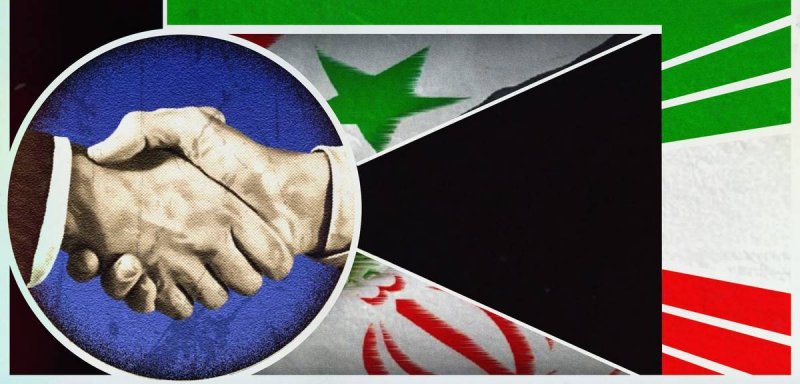
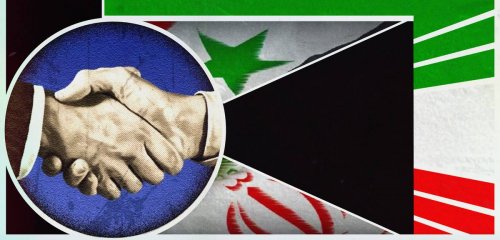
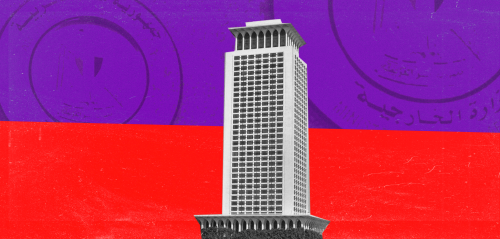
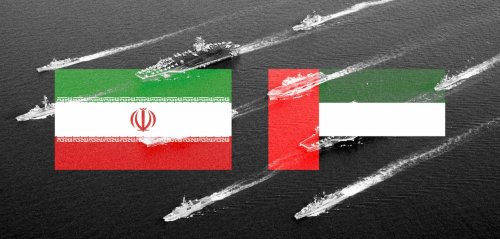
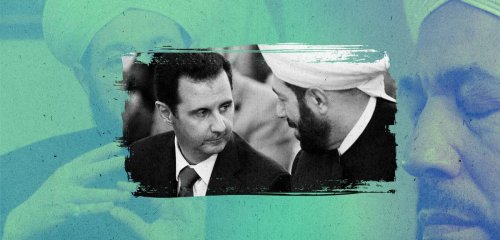



Join the Conversation
ذوالفقار عباس -
13 minutes agoا
Hossam Sami -
1 hour agoصعود "أحزاب اليمين" نتيجة طبيعية جداً لرفض البعض; وعددهم ليس بالقليل أبداً. لفكرة الإندماج بل...
Anonymous user -
1 day agoرائع و عظيم ..
جيسيكا ملو فالنتاين -
5 days agoزاوية الموضوع لطيفة وتستحق التفكير إلا أنك حجبت عن المرأة أدوارا مهمة تلعبها في العائلة والمجتمع...
Bosaina Sharba -
1 week agoحلو الAudio
شكرا لالكن
رومان حداد -
1 week agoالتحليل عميق، رغم بساطته، شفاف كروح وممتلء كعقل، سأشاهد الفيلم ولكن ما أخشاه أن يكون التحليل أعمق...